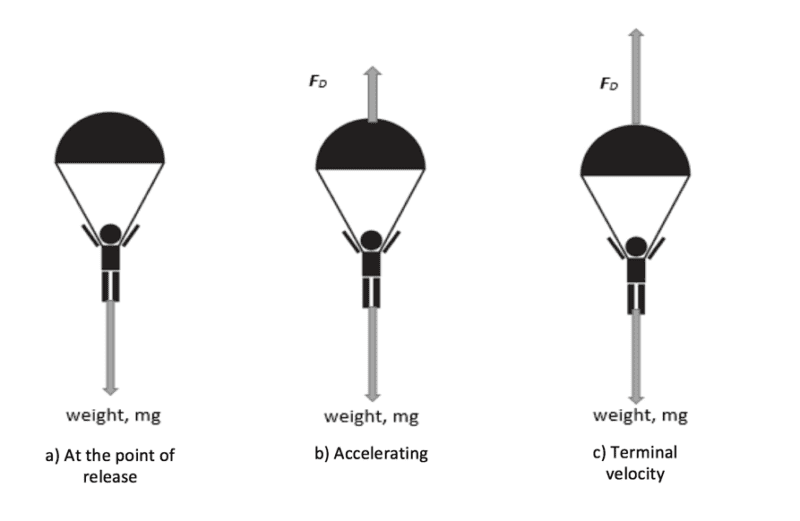In this post
When the brakes on a vehicle are applied, the amount of friction between the wheels and the surface it touches is increased. This helps the vehicle to slow down or stop.

The stopping distance of a vehicle is the sum of the thinking distance and the braking distance. It is measured in metres and is directly affected by the speed of the moving vehicle as well as the conditions of the road and driver.
The thinking distance is the distance travelled between the driver realising that he needs to apply the brakes and then actually applying the brakes. The time taken for the driver to realise they need to apply and actually applying the brakes is known as their reaction time. The driver’s reaction time can be significantly reduced by illness or tiredness, poor sight or reduced visibility in the environment and the intake of drugs or alcohol.
The braking distance is the distance travelled by the vehicle once the brakes have been applied. The braking distance can be influenced by the conditions of the road or weather as well as the mass of the vehicle.
As the force of friction is variable, it can be influenced by many different factors. For example, a wet surface reduces friction whereas a rough surface increases friction. The less friction there is between the tyres and the road, the more difficult it is for the vehicle to slow down or stop, and the longer the stopping distance becomes. If the driver had to suddenly apply the brakes, on an icy or wet road, the tyres may skid as they do not have the same grip and the force of friction is small.
It is harder for a vehicle with a larger mass to stop as a higher force of friction is required. This means that the stopping distance for a truck, for example, would be much greater than that of a small vehicle such as a Mini.
Every driver must be aware of how the conditions they are travelling in and the speed they’re travelling at will affect their stopping distance.

Acceleration due to gravity and weight
All objects will be affected by gravity at the same rate and accelerate at the same speed. You may think that this is not the case (after all, we know that a feather will take longer to hit the ground than a stone when both are dropped) but the only thing that makes two objects fall at a different rate is air resistance. In a vacuum (where there is no air), all objects, no matter what their size or mass, will fall at the same speed.
There are many great videos online that prove this theory where testing is done using objects like a bowling ball and a feather which both fall to the ground at the same rate.
In your exam, you may be asked to state the approximate value for the acceleration due to gravity (g) at the surface of the Earth. This is 10 m/s2. However, this is not the same on all planets or moons and depends upon the size of the planet or moon.
This force acting on an object in Earth’s gravity is called its weight, and can be calculated using the following formula:
![Rendered by QuickLaTeX.com \[ \text{Weight} = \text{mass} \times \text{gravitational field strength} \]](https://online-learning-college.com/wp-content/ql-cache/quicklatex.com-d6de6d834ae289bc6a3d9175b7b9f9c1_l3.png)
(You must know this equation for the exam and be able to rearrange it to change the subject of the equation.)
Since the size of the planet or moon affects the gravitational field strength, objects fall at a different rate on Earth as they do on the Moon. This is because they have the same mass but a different weight due to a variation in the gravitational field strength.

The gravitational field strength (g) on the Earth is 10 N/kg (ten Newtons per kilogram). This means that a mass of 1 kg will be attracted to the centre of the Earth by a force of 10 N. On the Moon, the gravitational field strength is much less, at a rate of 1.67 N/kg. This means that an object will be pulled to the centre of the Moon with a weaker force, meaning that objects weigh around six times less than they do on the Earth while still having the same mass.
A body’s centre of gravity is the point from which the weight of the body acts. Some bodies will have a low centre of gravity, which means that the point from which their weight comes is very close to the ground. The centre of gravity can be moved by changing the position from which the weight of a body is acting. For example, for a person standing with both feet on the ground, the centre of gravity will be in the middle of their body. If the same person then stands on their left leg, they are shifting the point at which their weight is centred and therefore changing their centre of gravity.
Air resistance and terminal velocity
If an object moves through the air, the opposing force that tries to stop this movement is a type of friction known as air resistance or drag force. The size of the drag force depends on the shape and speed of the object. The faster the speed of an object, the greater the opposing force. Therefore, faster moving objects are designed to be more streamlined so that they can travel faster through a larger resistance. Below is a diagram showing the movement of a parachutist and the effect of air resistance.

As you can see in the diagram, the forces acting on the body change with acceleration. At point a), the parachute has been released, and the acceleration is small. There is no drag force on the object. At point b), the object keeps moving and slowly accelerates as it drops towards the ground. This results in a drag force being produced. This air resistance acts in an upwards direction against the inner surface of the parachute to oppose the downwards movement of the parachute. This means that the resultant downward force on the object is equal to weight – FD. The air resistance has made the resultant downward force smaller. As the downwards force is smaller and acceleration is related to force through the equation acceleration = forcemass, the acceleration is also smaller. The faster the object, the bigger the drag force. At point c), the drag force has increased to the point where it is equal to the weight. There is no unbalanced force on the object, so the acceleration stays at zero. The object has reached its terminal velocity, and will not get any faster.



